- Home
- Peter F. Hamilton
Reality Dysfunction - Expansion nd-2 Page 11
Reality Dysfunction - Expansion nd-2 Read online
Page 11
As night fell at the end of the second day he sat at the stern, holding on to the tiller they had fixed up, and doing his best to keep the boat in the centre of the river. At least with this job he didn’t have to use his leg with its achingly stiff knee, though his left hand was incapable of gripping the tiller pole. The clammy air from the water made his fatigues uncomfortably sticky.
He saw Louis Beith making his way aft, carrying a flask. A medical nanonic package made a broad bracelet around his arm where Jacqueline Couteur had broken the bone and it glimmered dimly in the infrared spectrum.
“Brought you some juice,” Louis said. “Straight out the cryo.”
“Thanks.” Murphy took the mug he held out. With his retinal implants switched to infrared, the liquid he poured from the flask was a blue so deep it was nearly black.
“Niels is talking to his demons again,” Louis said quietly.
“Not much we can do about it, short of loading a somnolence program into his neural nanonics.”
“Yeah, but Lieutenant; what he says, it’s like it’s for real, you know? I thought people hallucinating don’t make any sense. He’s even got me looking over my shoulder.”
Murphy took a swallow of the juice. It was freezing, numbing the back of his throat. Just perfect. “It bothers you that bad? I could put him under, I suppose.”
“No, not bad. It’s just kinda spooky, what with everything we saw, and all.”
“I think that electronic warfare gimmick the hostiles have affects our neural nanonics more than we like to admit.”
“Yeah?” Louis brightened. “Maybe you’re right.” He stood with his hands on his hips, staring ahead to the west. “Man, that is some meteorite shower. I ain’t never seen one that good before.”
Murphy looked up into the cloudless night sky. High above the Isakore ’s prow the stars were tumbling down from their fixed constellations. There was a long broad slash of them scintillating and flashing. He actually smiled, they looked so picturesque. And the hazy slash was still growing as more of them hit the atmosphere, racing eastwards. It must be a prodigious swarm gliding in from interplanetary space, the remains of some burnt-out comet that had disintegrated centuries ago. The meteorites furthest away were developing huge contrails as they sizzled their way downwards. They were certainly penetrating the atmosphere a long way, tens of kilometres at least. Murphy’s smile bled away. “Oh my God,” he said in a tiny dry voice.
“What?” Louis asked happily. “Isn’t that something smooth? Wow! I could look at that all night long.”
“They’re not meteorites.”
“What?”
“They’re not meteorites. Shit!”
Louis looked at him in alarm.
“They’re bloody kinetic harpoons!” Murphy started to run forwards as fast as his knee would allow. “Secure yourself!” he shouted. “Grab something and hold on. They’re coming down right on top of us.”
The sky was turning to day overhead, blackness flushed away by a spreading stain of azure blue. The contrails to the west were becoming too bright to look at. They seemed to be lengthening at a terrific rate, cracks of sunlight splitting open across the wall of night.
Kinetic harpoons were the Confederation Navy’s standard tactical (non-radioactive) planetary surface assault weapon. A solid splinter of toughened, heat-resistant composite, half a metre long, needle sharp, guided by a cruciform tail, steered by a processor with preprogrammed flight vector. They carried no explosives, no energy charge; they destroyed their target through speed alone.
Ilex accelerated in towards Lalonde at eight gees, following a precise hyperbolic trajectory. The apex was reached twelve hundred kilometres above Amarisk, two hundred kilometres east of Durringham. Five thousand harpoons were expelled from the voidhawk’s weapons cradles, hurtling towards the night-masked continent below. Ilex inverted the direction of its distortion field’s acceleration wave, fighting Lalonde’s gravity. Stretched out on their couches, the crew raged impotently against the appalling gee force, nanonic supplement membranes turning rigid to hold soft weak human bodies together as the voidhawk dived away from the planet.
The harpoon swarm sheered down through the atmosphere, hypervelocity friction ablating away the composite’s outer layer of molecules to leave a dazzling ionic tail over a hundred kilometres long. From below it resembled a rain of fierce liquid light.
Their silence was terrifying. A display of such potency should sound like the roar of an angry god. Murphy clung to one of the rails along the side of the wheel-house, squinting through squeezed-up eyelids as the solid sheet of vivid destruction plummeted towards him. He heard Jacqueline Couteur moaning in fear, and felt a cheap, malicious satisfaction. It was the first time she had shown the slightest emotion. Impact could only be seconds away now.
The harpoons were directly overhead, an atmospheric river of solar brilliance mirroring the Zamjan’s course. They split down the centre, two solid planes of light diverging with immaculate symmetry, sliding down to touch the jungle away in the west then racing past the Isakore at a speed too fast even for enhanced human senses to follow. None of them, not one, landed in the water.
Multiple explosions obliterated the jungle. Along both sides of the Zamjan gouts of searing purple flame streaked upwards as the harpoons struck the earth, releasing their colossal kinetic energy in a single devastating burst of heat. The swath of devastation extended for a length of seven kilometres along the banks, reaching a kilometre and a half inland. A thick filthy cloud of loam and stone and wood splinters belched up high into the air, blotting out the heat flashes. The blast-wave rolled out in both directions, flattening still more of the jungle.
Then the sound broke over the boat. The roar of the explosions overlapped, merging into a single sonic battering-ram which made every plank on the Isakore twang as if it was an overtuned guitar string. After that came the eternal thunderclap of the air being ripped apart by the harpoons’ plunge; sound waves finally catching up with the weapons.
Murphy jammed his hands across his stinging eardrums. His whole skeleton was shaking, joints resonating painfully.
Debris started to patter down, puckering the already distressed surface of the river. A sprinkling of fires burnt along the banks where shattered trees lay strewn among deep craters. Pulverized loam and wood hung in the air, an obscure black fog above the mortally wounded land.
Murphy slowly lowered his hands, staring at the awful vision of destruction. “It was our side,” he said in dazed wonder. “We did it.”
Garrett Tucci was at his side, jabbering away wildly. Murphy couldn’t hear a thing. His ears were still ringing vociferously. “Shout! Datavise! My ears have packed up.”
Garrett blinked, he held up his communications block. “It’s working,” he yelled.
Murphy datavised his own block, which reported the channel to the ELINT satellite was open.
A beam of bright white light slid over the Isakore , originating from somewhere above. Murphy watched as the beam swung out over the water, then tracked back towards the boat. He looked up, beyond surprise. It was coming from a small aircraft hovering two hundred metres overhead, outlined by the silver stars. Green, red, and white strobes flashed on the tips of its wings and canards. His neural nanonics identified the jet-black planform, a BK133.
Murphy’s communication block bleeped to acknowledge a local channel opening. “Murphy? Are you there, Murphy?”
“Sir? Is that you?” he asked incredulously.
“Expecting someone else?” Kelven Solanki datavised.
The beam found the Isakore again, and remained trained on the deck.
“Have you still got your prisoner?”
“Yes, sir.” Murphy glanced at Jacqueline Couteur, who was staring up at the aircraft, shielding her eyes against the spotlight.
“Good man. We’ll take her back with us.”
“Sir, Niels Regehr is injured pretty badly. I don’t think he can climb a rope ladder.”
; “No problem.”
The BK133 was descending carefully, wings rocking in the thermal microbursts generated by the harpoons’ impact. Murphy could feel the compressor jets gusting against his face, a hot dry wind, pleasant after the river’s humidity. He saw a wide hatch was open on the side of the fuselage. A man in naval fatigues was slowly winching down towards the Isakore .
Floodlights on the roof of the navy office showed the grounds around the building were thick with people. All of them seemed to be looking up into the night sky.
Murphy watched them through the BK133’s open mid-fuselage hatch as Kelven Solanki piloted it down onto the roof pad. A wedge-shaped spaceplane was sitting on one side of the roof, wings retracted; it only just fitted, tail and nose were overhanging the edges. It was one of the most welcome sights he had seen in a long long while.
“Who are all those people?” he asked.
“Anyone who saw Ilex ’s spaceplane taking the staff away earlier,” Vince Burtis said. He was the nineteen-year-old navy rating who had winched the marine squad to safety. To him the invasion was exactly what he had signed on for, adventure on alien worlds; he was enjoying himself. Murphy hadn’t the heart to disillusion him. The kid would realize soon enough.
“I guess they want to leave too,” Vince Burtis said soberly.
The BK133 settled on the roof. Kelven datavised the flight computer to power down the internal systems. “Everyone out,” he said.
“Hurry, please.” Erato’s appeal was relayed through his communication block. “I’m in touch with the sheriffs outside. They say the crowd is already at the door.”
“They shouldn’t be able to get in,” Kelven datavised.
“I think some of the sheriffs may be with them,” Erato said hesitantly. “They’re only human.”
Kelven released his straps and hurried back into the cabin. Vince Burtis was guiding Niels Regehr’s tentative footsteps, helping him down through the hatch. Garrett Tucci and Louis Beith were already out, marching Jacqueline Couteur towards the spaceplane at gunpoint.
Murphy Hewlett gave his superior a tired smile. “Thank you, sir.”
“Nothing to do with me. If the Ilex hadn’t shown up you’d still be paddling home.”
“Is everyone else from the office out?”
“Yes, the spaceplane made a couple of flights earlier this evening, we’re the last,” Kelven said.
They both hopped down onto the roof. The noise of the spaceplane’s compressors rose, obscuring the sound of the crowd below. Kelven did his best to ignore the sensation of guilt. He had made a lot of friends among Lalonde’s civil administration staff. Candace Elford had turned over the BK133 as soon as he asked, no questions. Surely some people could have been taken up to the orbiting colonist-carriers.
Who though? And who would choose?
The best—the only—way to help Lalonde now was through the Confederation Navy.
The stairwell door on the other side of the BK133 burst open. People began to spill out onto the roof, shouting frantically.
“Oh, Christ,” Kelven said under his breath. He could see three or four sheriffs among them, armed with cortical jammers, one had a laser hunting rifle. The rest were civilians. He looked round. Vince Burtis and Niels Regehr were halfway up the stairs to the airlock. One of the Ilex ’s crew was leaning out, offering a hand to Niels. Vince was staring over his shoulder in shock.
“Get in,” Kelven datavised, waving his arms.
Two sheriffs were rounding the nose of the BK133, more people were crouched low scuttling under the fuselage. Still more were running out of the open door. There must have been thirty on the roof.
“Wait for us.”
“You can carry one more.”
“I have money, I can pay.”
Murphy aimed his Bradfield into the air and fired off two shots. The heavy-calibre weapon was startlingly loud. Several people threw themselves down, the rest froze.
“Don’t even think about it,” Murphy said. The Bradfield lined up on one of the ashen-faced sheriffs. A cortical jammer fell from the man’s hands.
The noise of the spaceplane’s compressors was becoming strident.
“There’s no room on board. Go home before anyone gets hurt.”
Kelven and Murphy started backing towards the spaceplane. A young brown-skinned woman who had crawled under the BK133 straightened up, and walked towards them defiantly. She was holding a small child in front of her, it couldn’t have been more than two years old. Plump face and wide liquid eyes.
Murphy just couldn’t bring himself to point the Bradfield at her. He reached the foot of the spaceplane’s aluminium stairs.
“Take him with you,” the woman called. She held the child out. “For Jesus’s sake, take my son, if you have a gram of pity in you. I’m begging you!”
Murphy’s foot found the first step. Kelven had a hand on his arm, guiding him back.
“Take him!” she shrieked over the swelling compressor efflux. “Take him, or shoot him.”
He shuddered at her fervour. She meant it, she really meant it.
“It would be a kindness. You know what will happen to him on this cursed planet.” The child was crying, squirming about in her grip.
The other people on the roof were all motionless, watching him with hard, accusing eyes. He turned to Kelven Solanki, whose face was a mask of torment.
“Get him,” Kelven blurted.
Murphy dropped the Bradfield, letting it skitter away across the silicon roof. He datavised a codelock into its controlling processor so no one could turn it on the spaceplane, then grabbed the child with his right hand.
“Shafi,” the woman shouted as he raced up the stairs. “His name’s Shafi Banaji. Remember.”
He barely had a foot in the airlock when the spaceplane lifted, its deck tilting up immediately. Hands steadied him, and the outer hatch slid shut.
Shafi’s baggy cotton trousers were soiled and stinking; he let out a long fearful wail.
Chapter 03
Including Tranquillity, there were only five independent (non-Edenist) bitek habitats to be found within the boundaries of the Confederation. After Tranquillity, probably the most well known, or notorious depending on your cultural outlook and degree of liberalism, was Valisk.
Although they were both, technically, dictatorships, they occupied opposite ends of the political spectrum, with the dominant ideologies of the remaining three habitats falling between them, a well-deserved mediocrity. Tranquillity was regarded as elitist, or even regal given its founder: industrious, rich, and slightly raffish, with a benevolent, chic ruler, it emphasized the grander qualities of life, somewhere you aspired to go if you made it. Valisk was older, its glory days over, or at the very least in abeyance: it played host to a more decadent population; money here (and there was still plenty) came from exploiting the darker side of human nature. And its strange governorship repelled rather than attracted.
It hadn’t always been so.
Valisk was founded by an Edenist Serpent called Rubra. Unlike Laton, who terrorized the Confederation two and a half centuries later, his rebellion was of an altogether more constructive nature. He was born in Machaon, a habitat orbiting Kohistan, the largest gas giant in the Srinagar star system. After forty-four years, he abandoned his culture and his home, sold his not inconsiderable share in his family’s engineering enterprise, and emigrated to a newly opened Adamist asteroid settlement in Kohistan’s trailing Trojan cluster.
It was a period of substantial economic growth for the star system. Srinagar had been colonized by ethnic-Hindus in 2178 during the Great Dispersal, a hundred and sixteen years earlier. Basic industrialization had been completed, the world was tamed, and people were looking for new ways of channelling their energies. All across the Confederation emerging colony planets were exploiting space resources and increasing their wealth dramatically. Srinagar was eager to be numbered among them.
Rubra started with six leased interplanetary cargo ships. Li
ke all Serpents he was a high achiever in his chosen field (nearly always to Edenist embarrassment, for so many of them chose crime). He made a small fortune supplying the Trojan cluster’s small but wealthy population of engineers and miners with consumer goods and luxuries. He bought more ships, made a larger fortune, and named his expanding company Magellanic Itg—joking to his peers that one day he would trade with that distant star cluster. By 2306, after twelve years of steady growth, Magellanic Itg owned manufacturing stations and asteroid-mining operations, and had moved into the interstellar transport market.
At this point Rubra germinated Valisk in orbit around Opuntia, the fourth of the system’s five gas giants. It was a huge gamble. He spent his company’s entire financial reserves cloning the seed, mortgaging half of the starships to boot. And bitek remained technology non grata for the major religions, including the Hindu faith. But Srinagar was sufficiently Bolshevik about its new economic independence from its sponsoring Govcentral Indian states, and energetic enough in its approach to innovation, to cast a blind eye to proscriptions announced by fundamentalist Brahmians on a distant imperialist planet over two centuries earlier. Planet and asteroid governments saw no reason to impose embargoes against what was rapidly evolving into one of the system’s premier economic assets. Valisk became, literally, a corporate state, acting as the home port for Magellanic Itg’s starship fleet (already one of the largest in the sector) and dormitory town for its industrial stations.
Although Valisk was a financially advantageous location from which Rubra could run his flourishing corporate empire, he needed to attract a base population to the habitat to make it a viable pocket civilization. Industrial stations were therefore granted extremely liberal weapons and research licences and Valisk started to attract companies specializing in military hardware. Export constraints were almost non-existent.
Rubra also opened the habitat to immigration for “people who seek cultural and religious freedom”, possibly in reaction to his own formal Edenist upbringing. This invitation attracted several nonconformist religious cults, spiritual groups, and primitive lifestyle tribes, who believed that a bitek environment would fulfil the role of some benevolent Gaia and provide them free food and shelter. Over nine thousand of these people arrived over the course of the habitat’s first twenty-five years, many of them drug– or stimulant-program addicts. At this time, Rubra, infuriated with their unrepentant parasitical nature, banned any more from entering.

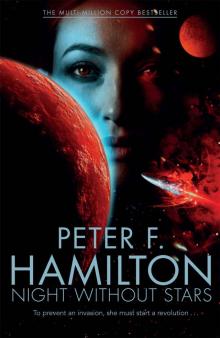 A Night Without Stars
A Night Without Stars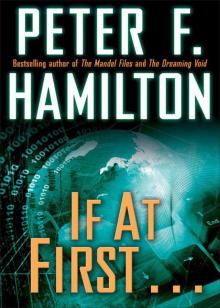 If at First . . .
If at First . . .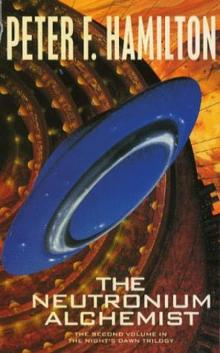 The Neutronium Alchemist
The Neutronium Alchemist Great North Road
Great North Road Misspent Youth
Misspent Youth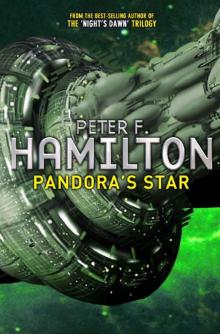 Pandora's Star
Pandora's Star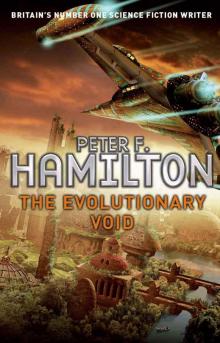 The Evolutionary Void
The Evolutionary Void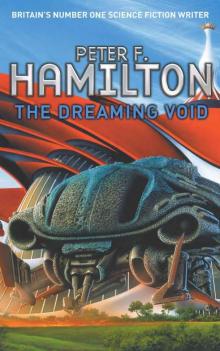 The Dreaming Void
The Dreaming Void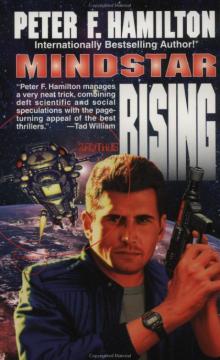 Mindstar Rising
Mindstar Rising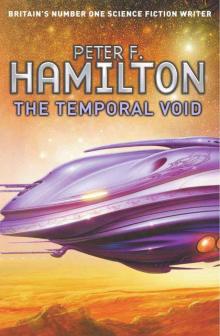 The Temporal Void
The Temporal Void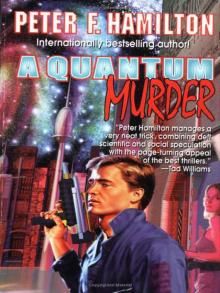 A Quantum Murder
A Quantum Murder The Hunting of the Princes
The Hunting of the Princes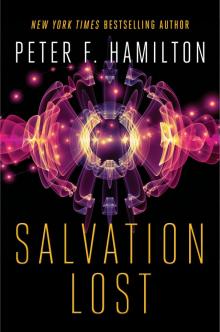 Salvation Lost
Salvation Lost The Dreaming
The Dreaming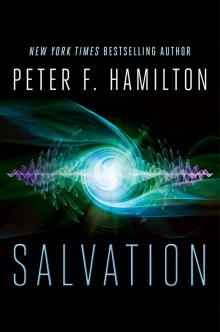 Salvation
Salvation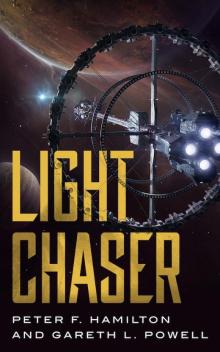 Light Chaser
Light Chaser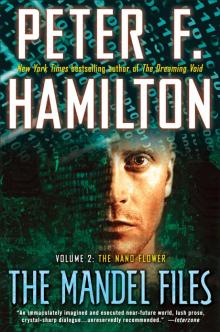 The Mandel Files, Volume 2: The Nano Flower
The Mandel Files, Volume 2: The Nano Flower![The Saints of Salvation [British Ed.] Read online](http://i1.bookreadfree.com/22/the_saints_of_salvation_british_ed__preview.jpg) The Saints of Salvation [British Ed.]
The Saints of Salvation [British Ed.]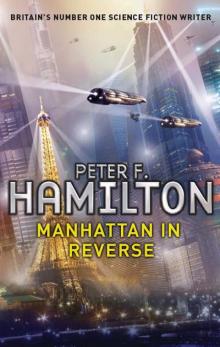 Manhattan in Reverse
Manhattan in Reverse The Secret Throne
The Secret Throne A Window Into Time
A Window Into Time A Second Chance at Eden
A Second Chance at Eden The Nano Flower
The Nano Flower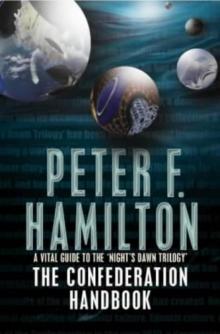 The Confederation Handbook
The Confederation Handbook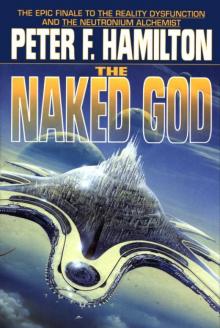 The Naked God
The Naked God The Saints of Salvation
The Saints of Salvation The Void Trilogy 3-Book Bundle
The Void Trilogy 3-Book Bundle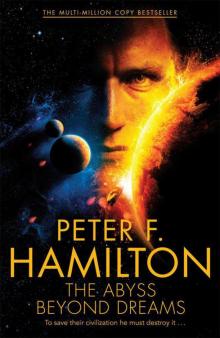 The Abyss Beyond Dreams
The Abyss Beyond Dreams A Voyage Through Air
A Voyage Through Air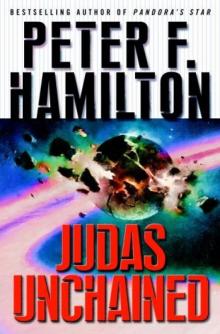 Judas Unchained
Judas Unchained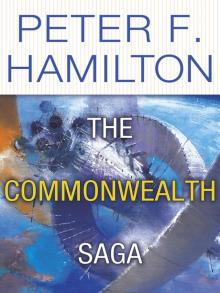 The Commonwealth Saga 2-Book Bundle
The Commonwealth Saga 2-Book Bundle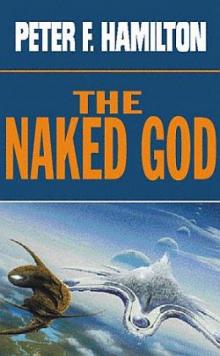 The Naked God - Flight nd-5
The Naked God - Flight nd-5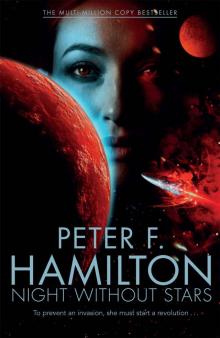 Night Without Stars (Chronicle of the Fallers Book 2)
Night Without Stars (Chronicle of the Fallers Book 2)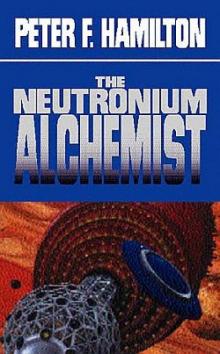 Neutronium Alchemist - Conflict nd-4
Neutronium Alchemist - Conflict nd-4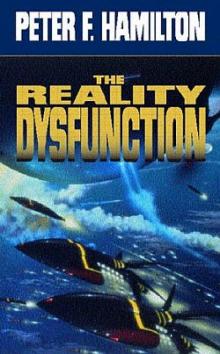 Reality Dysfunction - Expansion nd-2
Reality Dysfunction - Expansion nd-2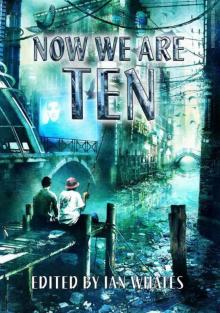 Now We Are Ten: Celebrating the First Ten Years of NewCon Press
Now We Are Ten: Celebrating the First Ten Years of NewCon Press Neutronium Alchemist - Consolidation nd-3
Neutronium Alchemist - Consolidation nd-3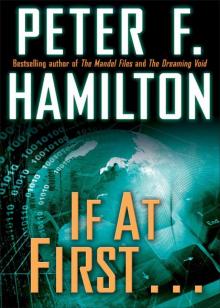 If at First . . . (Short Story)
If at First . . . (Short Story)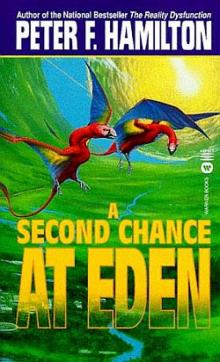 A Second Chance at Eden nd-7
A Second Chance at Eden nd-7 Judas Unchained cs-2
Judas Unchained cs-2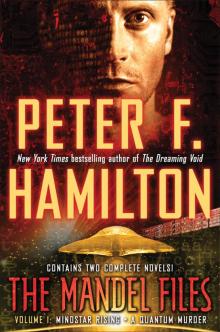 The Mandel Files, Volume 1
The Mandel Files, Volume 1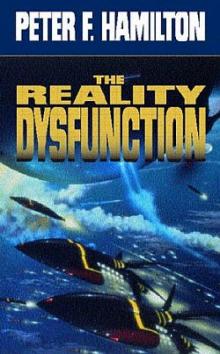 Reality Dysfunction — Emergence nd-1
Reality Dysfunction — Emergence nd-1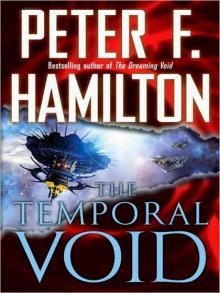 The Temporal Void (ARC)
The Temporal Void (ARC) The Mandel Files
The Mandel Files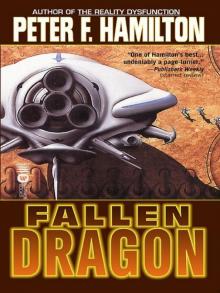 Fallen Fragon
Fallen Fragon Misspent Youth (commonwealth saga)
Misspent Youth (commonwealth saga)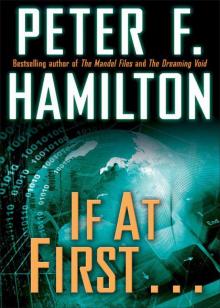 If at First...
If at First... Best of British Science Fiction 2016
Best of British Science Fiction 2016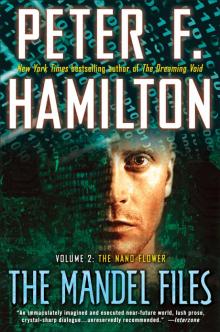 The Mandel Files, Volume 2
The Mandel Files, Volume 2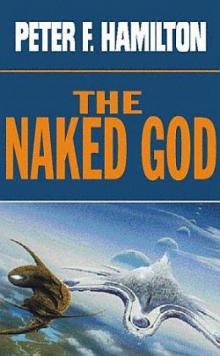 The Naked God - Faith nd-6
The Naked God - Faith nd-6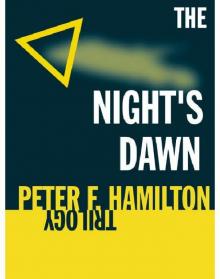 The Night's Dawn Trilogy
The Night's Dawn Trilogy Pandora's Star cs-2
Pandora's Star cs-2 A Window into Time (Novella)
A Window into Time (Novella)